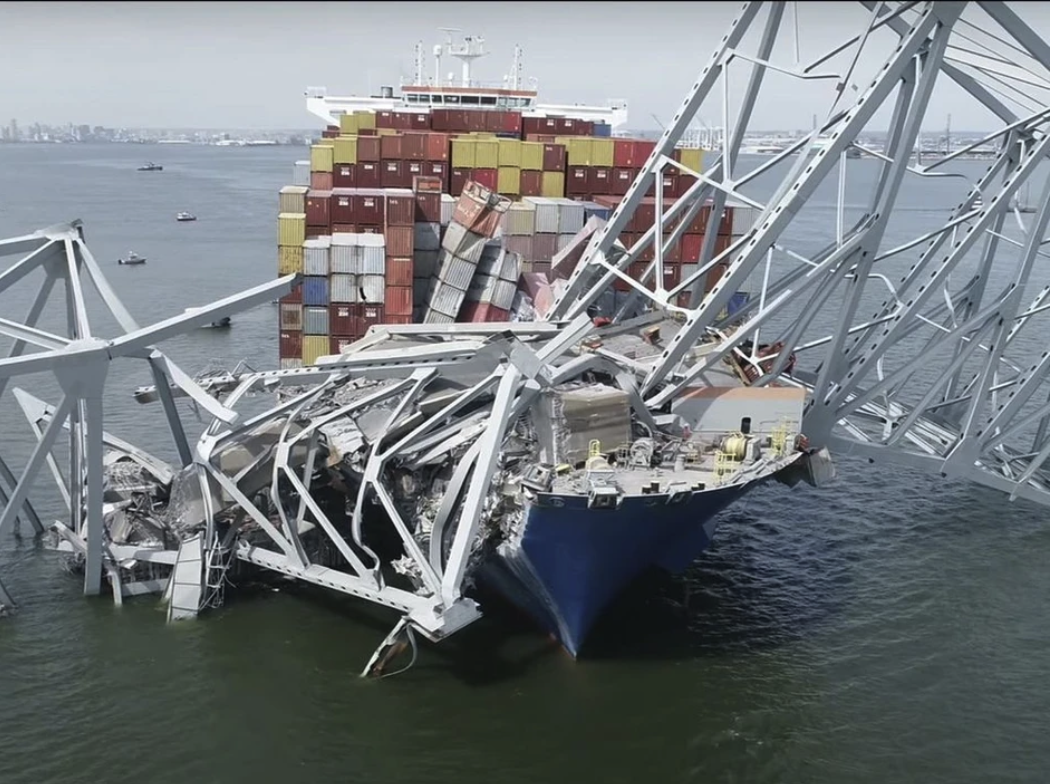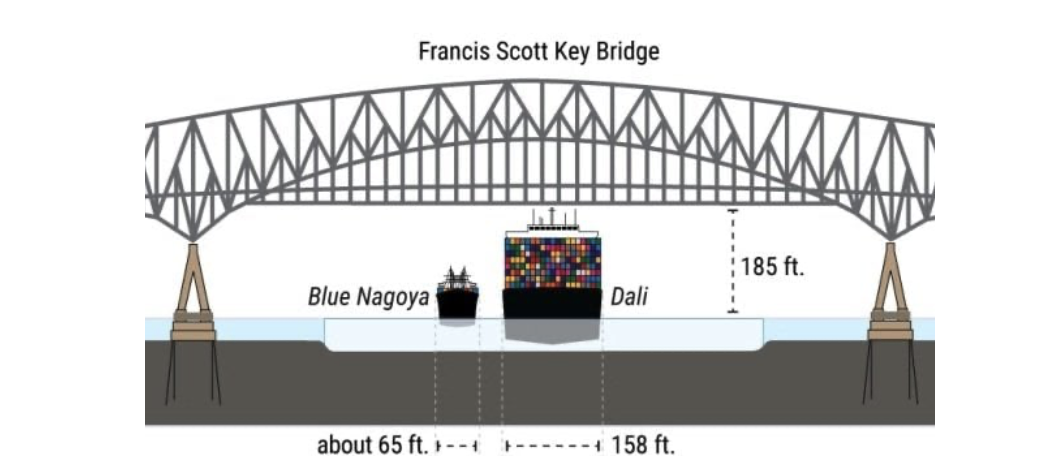NTSB: Loose Electrical Wire Led to Dali Hitting Francis Scott Key Bridge

A simple oversight in labeling an electrical wire was a likely causal factor in the blackout aboard the boxship Dali, resulting in the vessel's allision with a bridge pier and the destruction of the Francis Scott Key Bridge, according to the National Transportation Safety Board.
The Dali's main switchboard was constructed with spring-grip terminals for each wire connection. To make a connection, the spring is pushed back with a tool, the bare tip of the wire is inserted down into the terminal block, and the spring is released, forcing the wire against a contact - where it should stay for the rest of the life of the ship.
Aboard the Dali, each individual wire had a cylindrical label with the wire number on it for easy tracing and troubleshooting. The label was supposed to be placed above the bare tip of the wire, up on the insulation. Instead, someone clamped at least some of the wires' labels too far down towards the tip of the wire, NTSB found.
On wire 1 of terminal block 381, the label's incorrect position and its larger diameter prevented the bare tip of the wire from being inserted all the way down into the terminal block, the NTSB alleged. The safety agency determined that the improperly-placed plastic label hit the top of the terminal block and stopped the wire from going in any further. Because of this, the wire's tip was barely held by the clamp at the time of assembly. It then rattled free of the clamp at some point in service, and thereafter it made a poor, intermittent connection with the contact, according to NTSB's investigators.
In the early hours of March 26, 2024, the loose wire ceased making contact with the terminal, causing a fault that shut down the Dali's auxiliary power, NTSB found. In a cascade of events, this cut out the vessel's propulsion and steering, leaving Dali helpless and adrift. Without tug assist, and unable to restart successfully, Dali drifted into a pier supporting the Francis Scott Key Bridge and destroyed it, collapsing the structure and killing six people.
NTSB Chair Jennifer Homendy said Tuesday that the crew would have had a hard time finding the loose wire. NTSB only located it after a forensic examination of the switchboard and a series of tests aided by the shipbuilder. "It’s high with miles of wiring and thousands of electrical connections. Locating a single wire that is loose among thousands of wires is like looking for a loose bolt in the Eiffel Tower," she said.
NTSB's wire-label finding echoes a claim made previously by the vessel's owners and operators. In late July, owner Grace Ocean and operator Synergy Marine filed a lawsuit alleging that the shipbuilder "defectively designed the switchboard in such a manner that wiring connections were not secure, could not be verified as secure, and could lose connection" because the “labeling band identifying the wire was installed too close to the ferrule crimped on the end of the wire.”

Courtesy NTSB
NTSB also concluded that the Francis Scott Key Bridge was vulnerable to catastrophic failure if hit by a modern boxship, as has been previously observed. The Key Bridge suffered a similar incident in 1980 when it was hit by the small containership Blue Nagoya, and it survived with little damage. Dali was 10 times larger than the Nagoya, reflecting the upsizing of containerships over the decades. Ships had changed, but the bridge had not, and the outcome was much different.
Source: maritime-executive.com
